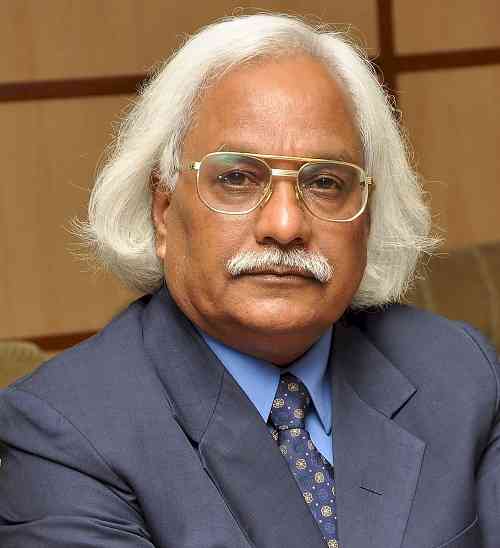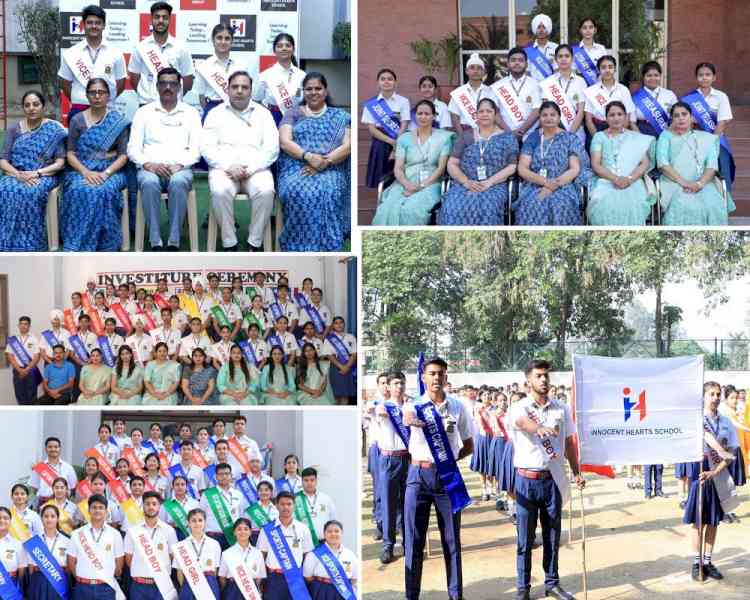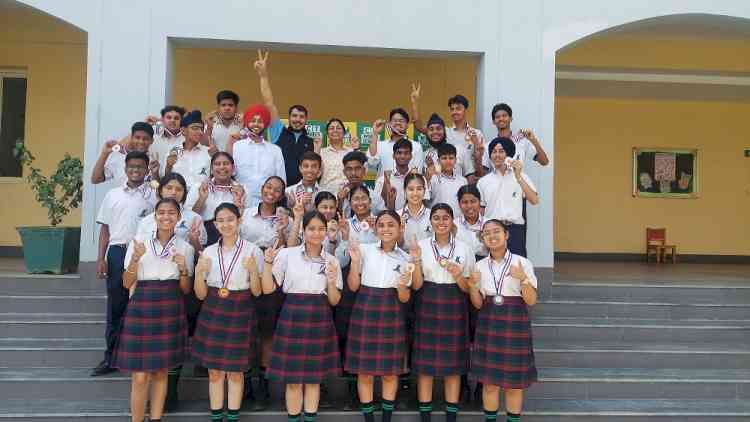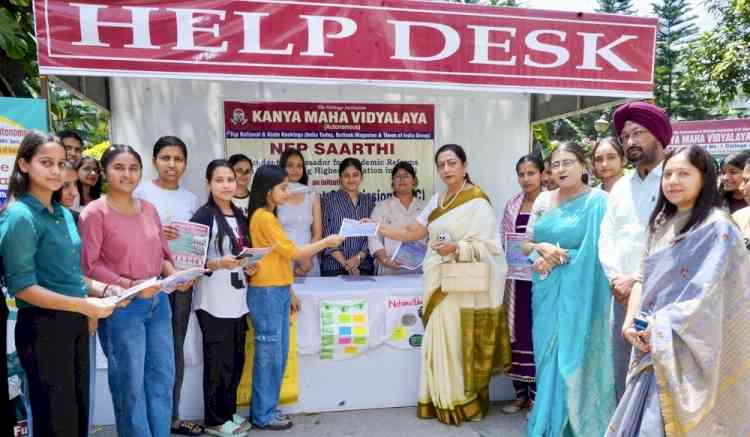Educating new generation learners- need for a new normal: Prof P B Sharma
Says let the Kulpaties of Indian Universities utilize the autonomy that the university act offers to them to innovate and develop an environment of learning

The New Education Policy NEP 2020 has created a new hope for rejuvenation and for radical reforms and in the education system from primary to the university levels as is evident from thousands of webinars, consultations and task force meets during the last one year deliberating on various aspects of implementation of the NEP. The focus of NEP- 2020 is undoubtedly on the holistic development of the students and on integrating values with education. The policy also advocates for multidisciplinary education and a research environment that supports enquiry and creative engagement. The policy has recommended deeper changes into the structure of education including breaking the basic foundation of the secondary education that earlier relied on a 5+3+4 model for schooling to the new structure that shall rest on 5+3+3+4 education model that shall lead to a four year degree program in place of 3 year degree for non professional programs at present.
But all such changes sound more generic as these are more of a convenience rather than radical in their concept or in design akin to the needs of the learners of the New age of knowledge and Innovation that is propelled by the power of connectivity and the power of digital learning, says eminent educationist Prof PB Sharma who is the founder Vice Chancellor of DTU and RGPV and also the past President of Association of Indian Universities, AIU.
The NEP- 2020 also fails to acknowledge that learning in a digital age is radically different than the learning in the pre-digital learning.
Thanks to Covid-19 that it has caused massive disruption to the education system at all levels from schools to colleges and the university levels in India and around the globe and compelled one and all in the education landscape to realize that in the digital age there is a level playing field for all those who are able to utilize 'advantage digital' and acknowledge the autonomy of the learners.
If any thing the Covid-19 has brought all the high and mighty in education including higher education providers on their knees to reassess their strategic directions for future growth and development.
The prophecy of the Management Guru Peter Drucker at the advent of internet in 1998 that "Thirty years from now large universities shall be relics, the universities shall not survive, it is as big a challenge as the printed book" is increasingly becoming true now that compulsions of disruption have begun to emerge in the university education all across the globe.
Covid-19 is to be taken as a wake up call for the universities around the world to recognize the power of internet and the positive disruptive power of digital learning.
So, the moot question is whether the NEP 2020 drafted by the learned committee headed by the renowned Space Scientist Dr Kasturirangan would suffice to sustain the momentum of education and research in the age of disruptive innovations or it should relook at the teaching learning environment it aims to create and structural focus it has adopted for reforms.
Regulatory reforms like one regulator for all in the name of centralization of control to demolish the multiplicity of councils and commissions as at present to meet the noble objective of minimum control and maximum regulation in a country were freedom to excel often becomes freedom to exploit sounds too optimistic to say the least.
One may question whether in an era that aims to promote autonomy of learning for the new generation of learners who are internet savy and like learn at their pace and as per their interest, whether the centralization of regulation is more apt in the age of decentralization and distributed controls. May be we need new models of distributed regulatory systems that promote flexibility, integrity and accountability along with transparency and self regulation.
One thing is certain that the days of class room teaching by the sage on stage, the revered teacher, are over and the age of collaborative learning has arrived. In this new set up the teachers are as much learners as their students, given the rapid pace at which the knowledge and skill base are changing. It is an age in which everyone knows something but no one knows everything and the last word on the subject is not yet written. The books of knowledge are open for obsolescence as much as the technology or the product face obsolescence in the age of continuous innovation.
So what need be done?
First and foremost, the educators should acknowledge that a New Normal is the need of the hour.
In this new normal leaning to learn and learning from each other is the foundation of a new learning environment that recognizes that learning has limits and that it has no end.
The new normal also acknowledges that The object of learning is not just to earn the degrees but to make oneself capable of contributing to the mainstream of national and global economy and rise to altars of human excellence in once life time as human life is a great opportunity to live a life full of divine and manifest immense potential that every human being has.
Further, learning to innovate and excel in a highly tech-savvy environment is yet another important aspect of the new learning paradigm. It is here the learning environment should nurture critical thinking and invoke the intuitive faculty already in man.
But the object of learning cannot be complete without 'learning to live together' in peace and harmony and with compassion with a firm commitment and resolve to sustain a happy and healthy environment for living in harmony with nature.
Hence the object of the university need to be revisited and the aims and objectives of higher education should be reexamined from the point of view of a radical departure to creating cognitive as well as characters kills that define the purpose of education for the new age of knowledge and disruptive innovations, says Prof Sharma who is currently the Vice Chancellor of Amity University Gurugram.
Our Gurukuls of ancient India laid a great emphasis on man making. For the Acharyas, the Kulpaties of these gurukuls where lord Rama ( Viswamitra and Vashishta Ashramas) Lord Krishna and Sudama(Sandeepani Ashrama ), Kauravas and Pandavas (Dronacharya Ashram Gurugram) just to name a few, were the education was not just for livelihood but to lead a dignified human life in service of divine and in service of society and mother nature. Humility, simplicity, personal integrity, professional morality and sustainability of a healthy environment were non negotiable.
The Gurukuls were the centres of learning in the lap of nature and for promoting learning largely through 'learning by doing' in an environment of interdisciplinary and holistic learning, nurturing life skills and character skills so important today in the New knowledge age of disruptive innovations.
The implementation of the New Education Policy, NEP- 2020 should go hand in hand with innovating and articulating ways to make policy adoptable to the new learning environment that is mandated now that the Digital Transformation has become a formidable means to churn out more and more knowledge from the vast reservoir of information that is accessible for the learners at ease and speed. We need to channelize the interest in learning of the young India in empowering themselves with capabilities, competence and character skills and make education a powerful vehicle of National rejuvenation and societal transformation.
Let the Kulpaties of Indian Universities utilize the autonomy that the university act offers to them to innovate and develop an environment of learning that creates such an India of our dream and make the universities of India rise to global esteem in QS and Times Rankings in top 100, nay in top 10 in the next few years.
It can be done and should be done now that the centre of gravity of learning and scholarship has shifted towards the east as much as the centre of gravity of global economy, says Prof Sharma.


 cityairnews
cityairnews 










